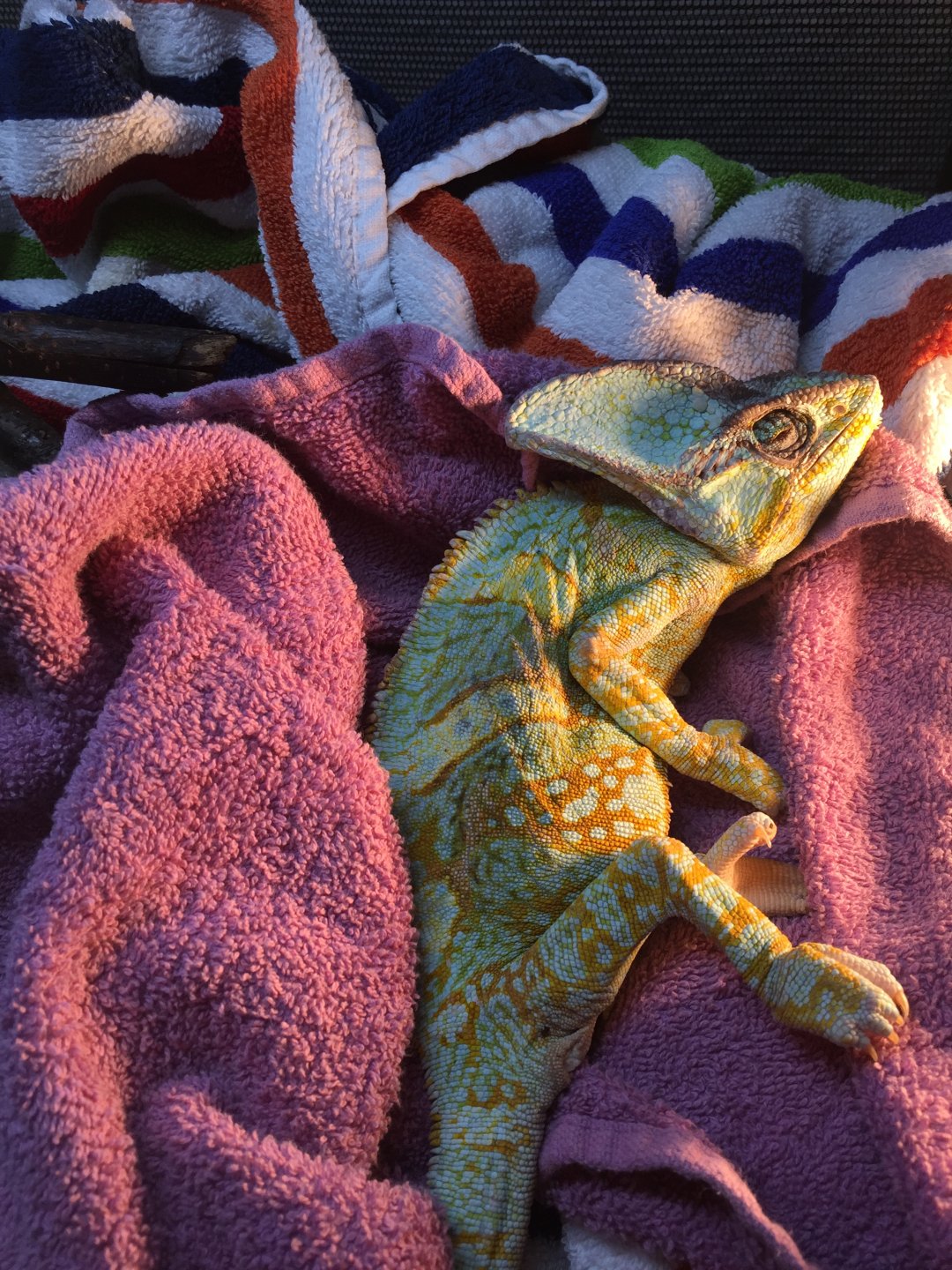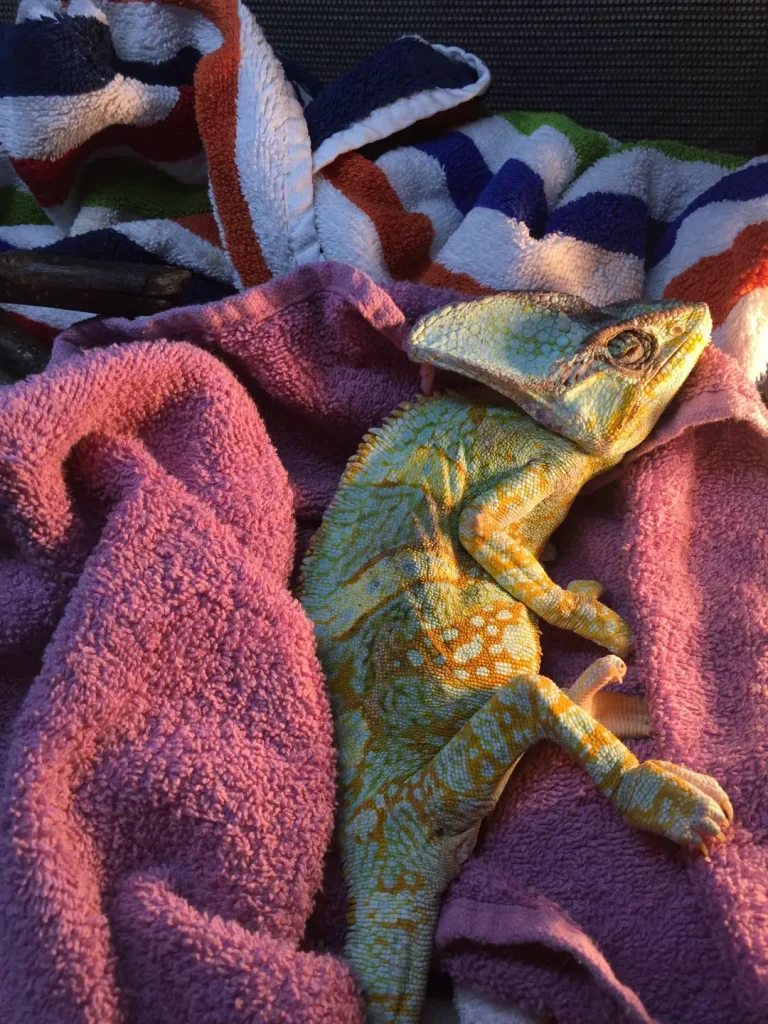Chameleons are fascinating creatures that require specific care to ensure they thrive in captivity. One of the biggest concerns for chameleon owners is knowing whether their pet is too cold or too hot. In this article, we will explore the signs and symptoms of a cold chameleon and offer tips on how to keep your chameleon comfortable and healthy.
Chameleons are ectothermic creatures, meaning they rely on external heat sources to regulate their body temperature. When a chameleon is too cold, it can lead to health issues and even death if not addressed promptly. By understanding the signs of a cold chameleon and taking appropriate measures, you can ensure your pet remains happy and healthy.

How Do I Know if My Chameleon is Cold?
Chameleons are fascinating creatures that require specific conditions to thrive. One of the most important factors is temperature. Chameleons are cold-blooded animals, which means that they rely on external sources of heat to regulate their body temperature. If your chameleon is too cold, it can lead to health problems. So, how do you know if your chameleon is cold? Let’s find out.
Body Language
Chameleons are known for their unique body language. Pay attention to your chameleon’s behavior and body posture. If your chameleon is lethargic, inactive, or not moving much, it could be a sign that it’s too cold. Additionally, if your chameleon is basking under the heat lamp or sitting directly under the UVB light, it could indicate that it’s trying to warm up.
On the other hand, if your chameleon is puffing up its body, it could be a sign that it’s too hot. This behavior is called “gaping,” and it’s a way for chameleons to release excess heat.
Temperature
The temperature inside your chameleon’s enclosure is critical to its health. Chameleons need a basking spot with a temperature between 85-95°F and a cooler spot with a temperature between 70-80°F. The ambient temperature should be around 75-85°F during the day and 65-75°F at night.
To ensure that your chameleon is warm enough, use a digital thermometer to measure the temperature inside the enclosure. Place the thermometer in various spots to get an accurate reading.
Humidity
Humidity is another crucial factor in a chameleon’s health. Chameleons need a humidity level of 50-70% in their enclosure. If the humidity is too low, it can lead to dehydration and respiratory problems.
To maintain the correct humidity level, mist the enclosure several times a day with a spray bottle. You can also use a humidifier to keep the humidity level consistent.
Lighting
Lighting is important for chameleons for two reasons. First, they need UVB light to produce vitamin D3, which is essential for calcium absorption. Second, they need a day/night cycle to regulate their internal clock.
Make sure that your chameleon has access to a UVB light for 10-12 hours a day. The light should be replaced every 6-12 months, as the UVB output decreases over time.
Food and Water
Chameleons need access to fresh water and a varied diet to maintain their health. Make sure that your chameleon has a clean water source, such as a drip system or water bowl.
Additionally, chameleons need a diet that consists of live insects, such as crickets, mealworms, and roaches. Offer a variety of insects to ensure that your chameleon is getting all the nutrients it needs.
Benefits of Proper Temperature
Maintaining the proper temperature in your chameleon’s enclosure has several benefits. It can help prevent health problems such as respiratory infections, metabolic bone disease, and digestive issues. Additionally, a warm and comfortable chameleon is more active, alert, and has a better appetite.
Conclusion
In conclusion, it’s essential to monitor the temperature inside your chameleon’s enclosure to ensure that it’s warm enough. Pay attention to your chameleon’s body language and behavior, and use a digital thermometer to measure the temperature. Maintain the correct humidity level, provide access to UVB light, and offer a varied diet and fresh water. By doing so, you can help your chameleon thrive and live a healthy life.
Frequently Asked Questions
Chameleons are fascinating creatures that require specific care to maintain their health. One of the most important factors in their care is ensuring that their environment is at the right temperature. Here are some frequently asked questions about how to know if your chameleon is cold.
1. How can I tell if my chameleon is cold?
Chameleons are cold-blooded animals, which means their body temperature is regulated by their environment. If your chameleon is too cold, they will become lethargic and may stop eating. You may notice that their movements are slower and that they are not as active as they usually are. Additionally, their color may be duller than normal, and they may become more aggressive than usual.
If you suspect that your chameleon is cold, it is important to check the temperature of their enclosure. Use a thermometer to check the temperature at different locations in the enclosure, and adjust the heating and lighting as needed to ensure that the temperature is within the appropriate range for your chameleon’s species.
2. What is the ideal temperature range for a chameleon?
The ideal temperature range for a chameleon varies depending on the species. In general, most chameleons require a basking spot with a temperature of 85-90°F during the day, and a cooler spot with a temperature of 70-75°F at night. It is important to provide a temperature gradient within the enclosure, so your chameleon can move between warmer and cooler areas as needed.
It is also important to provide UVB lighting for your chameleon, as this helps them produce vitamin D3, which is necessary for the absorption of calcium. Without adequate UVB lighting, your chameleon may develop metabolic bone disease, which can be fatal.
3. What types of heating should I use for my chameleon?
There are several types of heating that you can use to keep your chameleon warm, including basking bulbs, ceramic heat emitters, and heat mats. Basking bulbs provide heat and light, which can be beneficial for your chameleon’s overall health. Ceramic heat emitters provide heat without light, which can be useful for providing heat at night. Heat mats are often used to provide supplemental heat, but should not be the primary source of heat for your chameleon.
It is important to use a thermostat with any heating device to ensure that the temperature remains consistent and does not become too hot, which can be dangerous for your chameleon.
4. Can a chameleon become too hot?
Yes, a chameleon can become too hot, which can also be dangerous for their health. If the temperature in their enclosure is too high, they may become stressed and dehydrated. You may notice that they are panting or gaping, which is a sign that they are too hot. It is important to monitor the temperature in their enclosure regularly and adjust the heating and lighting as needed to maintain the appropriate temperature range for their species.
Additionally, it is important to provide a humidity gradient within their enclosure, as high humidity can help regulate their body temperature and prevent dehydration.
5. What should I do if I think my chameleon is too cold?
If you suspect that your chameleon is too cold, it is important to act quickly to prevent health problems. Check the temperature in their enclosure and adjust the heating and lighting as needed to maintain the appropriate temperature range for their species. You may also want to provide additional heat sources, such as a basking bulb or ceramic heat emitter.
If your chameleon is lethargic or not eating, it is important to seek veterinary care as soon as possible, as this may be a sign of a more serious health problem.
5 Warning Signs of a Dehydrated Chameleon
In conclusion, understanding the signs of a cold chameleon is crucial for their health and well-being. If you notice your chameleon exhibiting any of the common symptoms such as lethargy, loss of appetite, or darkening of their skin, it may be an indication that they are not warm enough.
To ensure that your chameleon stays warm and healthy, it’s important to provide them with a heat source such as a basking lamp or heat mat. Additionally, make sure that their enclosure is properly insulated and that their humidity levels are optimal.
Remember, being attentive to your chameleon’s behavior and environment is key to providing them with the best possible care. By taking the necessary steps to keep your chameleon warm, you can help them thrive and enjoy a happy, healthy life.


